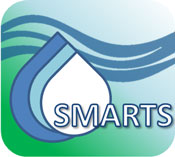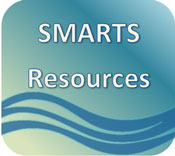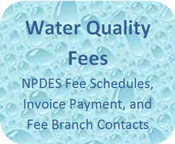
Storm Water Program
Storm water is defined by US EPA as the runoff generated when precipitation from rain and snowmelt events flows over land or impervious surfaces without percolating into the ground. Storm water is often considered a nuisance because it mobilizes pollutants such as motor oil and trash. In most cases, storm water flows directly to water bodies through sewer systems, contributing a major source of pollution to rivers, lakes, and the ocean. Storm water discharges in California are regulated through National Pollutant Discharge Elimination System (NPDES) permits. However, storm water may also act as a resource and recharge to groundwater when properly managed. The Water Boards are actively involved in initiatives to improve the management of storm water as a resource. For more information read our Storm Water Management Fact Sheet
Announcements
The Federal Clean Water Act (Clean Water Act) prohibits certain discharges of storm water containing pollutants except in compliance with a National Pollutant Discharge Elimination System (NPDES) permit. The NPDES stormwater program regulates some stormwater discharges from three potential sources: municipal separate storm sewer systems (MS4s), construction activities, and industrial activities.
View our Storm Water Permitting Program Pages:
STORMS' mission is to lead the evolution of storm water management in California by advancing the perspective that storm water is a valuable resource, supporting policies for collaborative watershed-level storm water management and pollution prevention, removing obstacles to funding, developing resources, and integrating regulatory and non-regulatory interests.
View our Storm Water Planning Program page:
The mission of the Storm Water Grant Program is to promote the beneficial use of storm water and dry weather runoff in California by providing financial assistance to eligible applicants for projects that provide multiple benefits while improving water quality.
View our Storm Water Grant Program page:
The Water Boards are working toward innovative storm water quality solutions including incorporation of low impact development objectives, green chemistry pollutant control, and education outreach through films.
- Impaired Waterbody and Total Maximum Daily Load Map Tool
- Impaired Waterbody Map Features:
- This map tool allows a user to locate Hydrologic Unit Code 10 (HUC-10) watersheds and impaired waterbodies with applicable requirements from Appendix 3 of the Industrial General Permit.
- Total Maximum Daily Load Map Features:
- This map tool allows a user to find Total Maximum Daily Load (TMDL) waterbody(ies) or watersheds that will have implementation requirements through the Industrial General Permit effective July 1, 2020.
- DISCLAIMER: The map tool is for information only and there is no explicit or implied assurance of the accuracy for the information provided. The map tool will help Dischargers determine potentially applicable TMDL requirements based upon facility location, but it is ultimately the responsibility of the Discharger to identify applicable TMDL requirements by identifying the facility’s: 1) receiving waterbody(ies), 2) the pollutants discharged, and 3) applicable requirements in Attachment E of the Industrial General Permit.
- Impaired Waterbody Map Features:
Electronic Reporting
(Updated 07/19/2023)Subscribe to our Email Lists
Storm Water Contacts
- General Inquiries:
stormwater@waterboards.ca.gov
Toll Free: 1-(866)-563-3107 - State and Regional Board Contact Information
-
- Report a Non-Filer - Let us know if a business does not have a Storm Water Permit.
- Report a QSD/QSP (Construction General Permit Qualified SWPPP Developer/Qualified SWPPP Practitioner)






